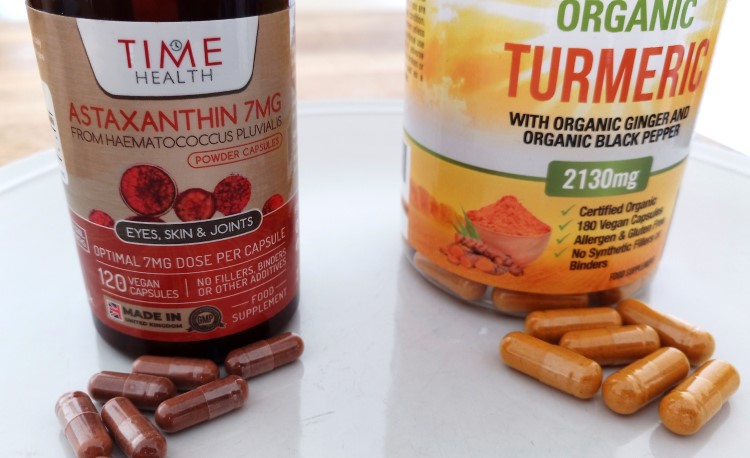Motivation in Sports Psychology
Dwight D Eisenhower, once said that ‘motivation is the art of getting people to do what you want them to do because they want to do it’. And as Dr Costas Karageorghis explains, recent research suggests that he wasn’t far wrong. Even better, changing your attitude towards training and competition can significantly enhance motivation.
Introduction
Motivation is an internal energy force that determines all aspects of our behaviour; it also impacts on how we think, feel and interact with others.
In sport, high motivation is widely accepted as an essential prerequisite in getting athletes to fulfil their potential. However, given its inherently abstract nature, it is a force that is often difficult to exploit fully. Some coaches, like Portugal manager Luiz Felipe ‘Big Phil’ Scolari, appear to have a ‘magic touch’, being able to get a great deal more out of a team than the sum of its individual parts; others find motivation to be an elusive concept they are forever struggling to master.
What is it that makes individuals like the 45-year-old sprinter Merlene Ottey, who competed in her seventh Olympics in Athens 2004, churn out outstanding performances year in, year out?
Elite athletes such as Ottey have developed an ability to channel their energies extremely effectively. Indeed, motivation is essentially about the direction of effort over a prolonged period of time.
There are numerous approaches to the study of motivation. Some are based on schedules of positive and negative reinforcement (eg BF Skinner’s and Ivan Pavlov’s behaviourism) while others focus on an individual’s sense of mastery over a set of circumstances (eg Albert Bandura’s self-efficacy theory). This article explores the constituents of motivation using a contemporary approach, popularised by Americans Edward Deci and Richard Ryan, known as self-determination theory, which emphasises the role of individual choice.
The article will also outline some of the key findings from recent literature and provide four evidence-based techniques relating to the enhancement of motivation. You will be able to tailor the motivational techniques to enhance your participation in sport or the performance of others. You will learn that motivation is a dynamic and multifaceted phenomenon that can be manipulated, to some degree at least, in the pursuit of superior sporting performance.
Different types of motivation
One of the most popular and widely tested approaches to motivation in sport and other achievement domains is self-determination theory1,2,3. This theory is based on a number of motives or regulations, which vary in terms of the degree of self-determination they reflect. Self-determination has to do with the degree to which your behaviours are chosen and self-initiated. The behavioural regulations can be placed on a self-determination continuum (see Figure 1 below). From the least to the most self-determined they are amotivation, external regulation, introjected regulation, identified regulation, integrated regulation and intrinsic motivation.
Amotivation represents a lack of intention to engage in a behaviour. It is accompanied by feelings of incompetence and a lack of connection between one’s behaviour and the expected outcome. For example, an amotivated athlete might be heard saying, ‘I can’t see the point in training any more – it just tires me out’ or ‘I just don’t get any buzz out of competition whatsoever’. Such athletes exhibit a sense of helplessness and often require counselling, as they are highly prone to dropping out.
External and introjected regulations represent non-self-determined or controlling types of extrinsic motivation because athletes do not sense that their behaviour is choiceful and, as a consequence, they experience psychological pressure. Participating in sport to receive prize money, win a trophy or a gold medal typifies external regulation. Participating to avoid punishment or negative evaluation is also external. Introjection is an internal pressure under which athletes might participate out of feelings of guilt or to achieve recognition.
Identified and integrated regulations represent self-determined types of extrinsic motivation because behaviour is initiated out of choice, although it is not necessarily perceived to be enjoyable. These types of regulation account for why some athletes devote hundreds of hours to repeating mundane drills; they realise that such activity will ultimately help them to improve. Identified regulation represents engagement in a behaviour because it is highly valued, whereas when a behaviour becomes integrated it is in harmony with one’s sense of self and almost entirely self-determined. Completing daily flexibility exercises because you realise they are part of an overarching goal of enhanced performance might be an example of integrated regulation.
Intrinsic motivation comes from within, is fully self-determined and characterised by interest in, and enjoyment derived from, sports participation. There are three types of intrinsic motivation, namely intrinsic motivation to know, intrinsic motivation to accomplish and intrinsic motivation to experience stimulation. Intrinsic motivation is considered to be the healthiest type of motivation and reflects an athlete’s motivation to perform an activity simply for the reward inherent in their participation.
Flow: the ultimate motivational state
According to Hungarian psychologist Mihalyi Csikszentmihalyi, the highest level of intrinsic motivation is flow state4,5. Flow is characterised by complete immersion in an activity, to the degree that nothing else matters. Central to the attainment of flow is a situation in which there is a perfect match between the perceived demands of an activity and an athlete’s perceived ability or skills (see Figure 2 above). During flow, self-consciousness is lost and athletes become one with the activity. For example, a World champion canoeist I work with often describes how the paddle feels like an extension of her arms while she is in flow.
An overbearing or unrealistic challenge can cause excess anxiety, which means that coaches need to ensure that athletes set realistic goals. Conversely, if athletes bring a high level of skill to an activity and the challenge that it provides is relatively low, such as Barcelona and Brazil’s Ronaldinho playing in a minor football league, this can result in boredom. The final quadrant in Figure 2 shows apathy, which transpires when both challenge and skill are low. To promote flow, it is important to find challenges that are going to stretch athletes just a touch further than they have been stretched before.
Recent motivation research based on SDT
A study examining the relationship between athletes’ goal orientations and their levels of intrinsic and extrinsic motivation indicated that British collegiate athletes with task-related or personal mastery goals were far more likely to report high self-determination than athletes with ego-orientated or social comparison-type goals6.
The study provided tentative support for the proposition that focusing on personal mastery and self-referenced goals promotes intrinsic motivation to a greater degree than focusing on winning and demonstrating superiority over others. This has important implications for practitioners who work with children, given the wealth of evidence that suggests that a focus on personal mastery and intrinsic motivation (enjoyment) brings the most positive motivation outcomes7,8.
A very recent study showed that during competition deemed to be important, intrinsically motivated athletes developed task-oriented (positive) coping strategies9. Conversely, extrinsically motivated athletes tended to avoid dealing with key issues and were far less likely to achieve their goals. In another study, researchers adopted a qualitative approach to answer the question ‘why does the “fire” of elite athletes burn so brightly?’10. They sought to demystify the differences between high achievers and also-rans in the world of sport.
Their interviews with 10 elite Australian track and field athletes revealed three overarching themes:
- Elite athletes set personal goals that were based on both self-determined and extrinsic motives;
- They had a high self-belief in their ability to succeed;
- Track and field was central to their lives – everything rotated around their involvement in the sport.
Using a statistical procedure known as ‘cluster analysis’, colleagues and I have identified two types of ‘motivation profile’11. The first was characterised by high levels of both controlling and self-determined types of behavioural regulations and the second by high self-determined and low controlling motivation. A comparison of the two profiles on the motivation outcomes of enjoyment, effort, positive and negative affect, attitude towards sport, strength and the quality of behavioural intentions, satisfaction, and frequency of attendance showed that participants in the first profile reported higher levels on all eight positive consequences when compared to those in the second profile.
This finding suggests that the simultaneous presence of high extrinsic and high intrinsic motivation is likely to yield the most positive benefits for adult athletes. However, it is critical that extrinsic motives are nurtured on a firm foundation of high intrinsic motivation. Without high intrinsic motivation, athletes are likely to drop out when they encounter problems such as injury, non-selection or demotion.
We conducted a follow-up study confirming the profiles identified in 2000 and came up with a similar solution (see Figure 3 below) using a new sample of adult athletes12. Importantly, we found that participants in cluster 1 also reported better concentration on the task at hand.

Motivational techniques for coaches and athletes
1. Goal setting
Athletes should be encouraged to set a few ambitious but achievable long-term goals; perhaps to represent their country in a major championship in three or four years. Through empowering athletes to set their own goals, they are more likely to accept the challenges that lie ahead and pursue the goals with enthusiasm13;
To keep athletes on track with their long-term goals, they should also set appropriate medium-term goals. For example, following a bronze medal-winning performance at the 2004 Athens Olympics, UK heptathlete Kelly Sotherton set herself the medium-term goal of winning the 2006 Commonwealth title in Melbourne (which she achieved) en route to pursuing her long-term goal to be crowned Olympic champion at the 2008 Beijing Games;
By far the most important goals in practical terms are those for the short-term, as it is these that keep athletes focused on the checkmarks which are seminal to achieving superior performance. Therefore, short-term goals should be predominantly process-oriented. For example, when Manchester United’s Wayne Rooney injured a metatarsal six weeks before the start of the soccer World Cup, he set a series of process goals in his race to regain full fitness. These included daily physiotherapy sessions, remedial exercises in an oxygen chamber, non weight-bearing aerobic activities, monitoring of nutritional intake and so on;
Goals need to be monitored and revised on a regular basis. One of the biggest mistakes that coaches make in setting goals is that they are often too rigid in their approach. The goal setting process works best when there is some flexibility and the individual athlete or team take ownership of each goal. Thus, coaches and managers are better off exercising some democracy when setting goals, particularly if working with more experienced athletes.
2. Using extrinsic rewards
According to SDT1, the key aspect in using extrinsic rewards effectively is that they reinforce an athlete’s sense of competence and self-worth. Thus, a reward should be informational in nature rather than controlling. If a reward comes to be controlling, it can significantly undermine intrinsic motivation. For a reward to be informational, it is advisable that it has relatively little monetary worth (ie it is a token reward), such as a ‘woman of the match’ or ‘athlete of the tour’ title. Also, the reward should be presented to an athlete in front of all potential recipients with some emphasis placed on the prestige associated with it. Other popular ways of using token rewards include etching athletes’ names on annual honours boards for their contributions, or awarding a special item of clothing.
3. Motivational music
A particularly good way to motivate athletes in training and prior to competition is through the use of music they perceive to be inspirational. Sydney Olympics rowing gold medallist, Tim Foster, now a respected coach, uses music to punctuate all of the indoor training sessions that he leads. Specifically, during circuit training or rowing ergometer intervals, he puts on loud/fast music, while during recovery periods he plays soft/slow music.
Therefore, work and recovery times are regulated by music. Research from Brunel University indicates that this approach increases work output, reduces perceived exertion and improves in-task affect – the pleasure experienced during the activity14,15.
4. Positive self-talk
Positive self-talk is a technique that can be used to enhance motivation across a wide range of achievement domains. It makes use of an athlete’s powerful inner voice to reinforce their self-esteem or important aspects of their performance. With appropriate repetition, self-talk can positively alter an athlete’s belief system. I use three types of self-talk in my work with athletes and will illustrate each with an example to assist you in coming up with your own.
The first type is known as task-relevant self-talk, which serves to focus an athlete’s attention on the task at hand. A karateka I worked with used the mantra ‘pillar of power’ to reinforce his strong posture. The second type is known as mood-related self-talk, which impacts on how athletes feel. An international water skier came up with ‘butterflies in formation’ to represent how the butterflies in her tummy would work for her rather than against her. The third type is known as a positive self-affirmation statement and the most famous exponent of these was the legendary boxer Mohammed Ali who repeated the claim, ‘I am the greatest’ so many times that even his opponents believed it.
‘I figured that, if I said it enough, I would convince the world that I really was the greatest.’
Mohammed Ali
Summary
Each and every one of us has an untapped energy source that can be drawn upon to bring about superior results. Enhancing motivation is fundamentally about a change of attitude, developing a positive ‘can do’ mindset and engaging in systematic behaviours – the short-term process goals – that facilitate improvement.
If you have a leadership role in sport you will have considerable influence on how motivated your athletes or team might feel. You can instil a good work ethic, recognise individual effort and instigate transparent reward structures that reinforce people’s sense of competence.
To work best, the techniques mentioned in this article need to be moulded around specific circumstances and the needs of individual athletes. Always strive to be original and innovative in the application of motivational techniques.
References
1. Deci E, Ryan R (1985) Intrinsic Motivation and Self-determination in Human Behavior, New York: Plenum
2. J Personality Social Psych 1987; 53:1024-1037
3. AmPsych 2000; 55:68-78
4. Csikszentmihalyi M (1975) Beyond Boredom and Anxiety, San Francisco, CA: Josey-Bass
5. Csikszentmihalyi M (1990) Flow: The Psychology of Optimal Experience, New York: Harper and Row
6. J Sports Sci 2001; 19:397-409
7. Brit J Educ Psych 1994; 64:253-261
8. Proceedings of the 2001 World Congress on Sport Psychology, Skiathos, Greece 2001; 3:321-323
9. J Sport Exerc Psych 2004; 26:396-411
10. Psych Sport Exerc 2004; 5:183-200
11. Res Quart Exerc Sport 2000; 71:387-397
12. Vlachopoulos S and Karageorghis C (under review)
13. Advances in Sport Psychology (2nd ed), Champaign IL: Human Kinetics, 2002: 459-499
14. J Sport Behav 1997;20:54-68
15. Aus J Psych; in press
Newsletter Sign Up
Testimonials
Dr. Alexandra Fandetti-Robin, Back & Body Chiropractic
Elspeth Cowell MSCh DpodM SRCh HCPC reg
William Hunter, Nuffield Health
Newsletter Sign Up
Coaches Testimonials
Dr. Alexandra Fandetti-Robin, Back & Body Chiropractic
Elspeth Cowell MSCh DpodM SRCh HCPC reg
William Hunter, Nuffield Health
Keep up with latest sports science research and apply it to maximize performance
Today you have the chance to join a group of athletes, and sports coaches/trainers who all have something special in common...
They use the latest research to improve performance for themselves and their clients - both athletes and sports teams - with help from global specialists in the fields of sports science, sports medicine and sports psychology.
They do this by reading Sports Performance Bulletin, an easy-to-digest but serious-minded journal dedicated to high performance sports. SPB offers a wealth of information and insight into the latest research, in an easily-accessible and understood format, along with a wealth of practical recommendations.
*includes 3 coaching manuals
Get Inspired
All the latest techniques and approaches
Sports Performance Bulletin helps dedicated endurance athletes improve their performance. Sense-checking the latest sports science research, and sourcing evidence and case studies to support findings, Sports Performance Bulletin turns proven insights into easily digestible practical advice. Supporting athletes, coaches and professionals who wish to ensure their guidance and programmes are kept right up to date and based on credible science.

